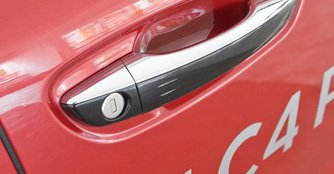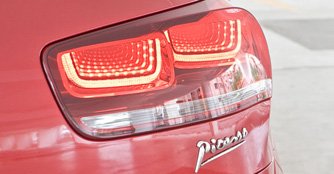Citroen C4 Picasso Diesel 1.6 e-HDi ETG6 INTENSIVE (A) Review
21 Aug 2014|25,886 views
First introduced at the Paris Motor Show in 2007, the Citroen C4 Picasso is a compact Multi-Purpose Vehicle (MPV), available as a five-seater. There is also a seven-seater version, called the Grand C4 Picasso, introduced a year earlier at the same venue.
As a mainstream car, it somehow dwindled in the shadows of the French manufacturer's DS range, which was a success and made Citroens really cool cars to own.
Things have certainly changed at the French camp, with the addition of futuristic and trendy cars such as the one you see here. It's almost as if the regular lineup has been reborn in a trend that produces quirky but high-quality cars.
Exterior
There's no doubt that the new C4 Picasso stands out from the crowd. Appearing almost identical to the Technospace Concept that it was introduced as, the car has a space-age style that resembles Citroen's DS range.
The double chevron chromed badge extends out across the bonnet line and around into the wings, allowing the sleek LED daytime running lights to emerge from underneath. This connects the whole front facet of the car together, giving it a much more interesting look.
 |
The side profile does give the C4 Picasso a sporty stance, helped in part by the sloping rear window as well as the curved C-pillar that kinks back to meet the shoulder line. This said C-pillar is made more prominent, thanks to a chromed finish.
At 4,428mm x 1,826mm x 1,611mm (L x W x H), the C4 Picasso is 168mm shorter and 27mm lower in height as compared to the new Grand C4 Picasso.
These compact dimensions also allow the car to be reminiscent of a conventional hatchback, which is some clever styling at work by the designers at Citroen.
 |
Interior
The really strong point of the new C4 Picasso is in its cabin. If anything its interior is even more remarkable than its exterior thanks to a mixture of high-quality and soft-touch materials on a number of surfaces.

Taking pride in the centre of the dashboard is a sharp-looking 12-inch display that can be configured into a number of different appearances and profiles. Its primary objective is to serve as the instrument panel but it can also display navigation details, serving up clear digitalised information for the driver.
Despite being slightly shorter in overall length than its predecessor, the new C4 Picasso has gained a longer wheelbase of 2,785mm (55mm longer than the previous model).
This immediately translates in more passenger space. Plus, with cubby holes littered around the cabin (including a removable glovebox that allows for easy access to the rear or for a quick driver change on longer journeys), occupants can easily store their barang barang.
The car also boasts a big 537-litre boot that can be expanded to 1,851 litres with all seats folded.
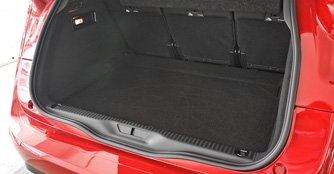
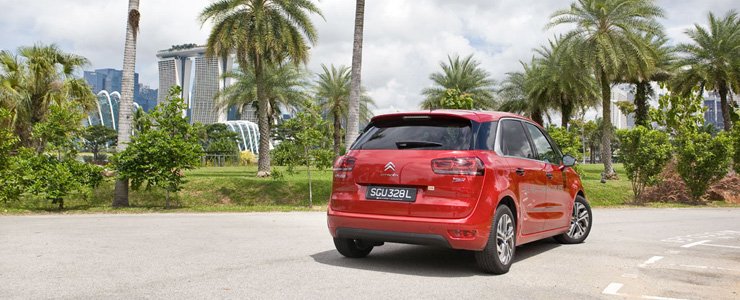 |
The Drive
Powering the new C4 Picasso is a 1.6-litre four-cylinder turbodiesel engine. Despite having a maximum output of just 115bhp, the C4 Picasso is quite perky on the go. Part of the reason for this is its light weight of just 1,393kg.
The engine drives the front wheels through an ETG6 automated manual transmission. While this said transmission takes a little fun out of the driving experience, gear changes are smoother and faster than they have been in other automated manuals we've tested.

As you would come to expect from a car of its genre, the C4 Picasso wallows a little round bends, which discourages you to take on corners at a faster pace.
More relevantly, the suspension feels well-damped, which makes going over broken surfaces a cinch for the car to handle. Combine this comfortable trait with its reduced noise levels, and you'll get a car that's gentle and gracious for all occupants on board.
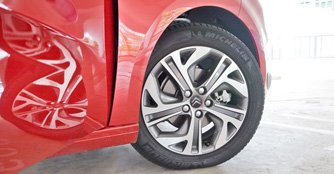
Conclusion
Citroen has done an impressive job in refining the new C4 Picasso, and from an aesthetics point of view, it resembles a car we would expect to see in its DS lineup rather than its mainstream range.
At $142,988 (as of 21st August 2014) the C4 Picasso also offers excellent and practical features along with a decent driving experience that perfectly demonstrates that a car can have both form and function all packed into one.
First introduced at the Paris Motor Show in 2007, the Citroen C4 Picasso is a compact Multi-Purpose Vehicle (MPV), available as a five-seater. There is also a seven-seater version, called the Grand C4 Picasso, introduced a year earlier at the same venue.
As a mainstream car, it somehow dwindled in the shadows of the French manufacturer's DS range, which was a success and made Citroens really cool cars to own.
Things have certainly changed at the French camp, with the addition of futuristic and trendy cars such as the one you see here. It's almost as if the regular lineup has been reborn in a trend that produces quirky but high-quality cars.
Exterior
There's no doubt that the new C4 Picasso stands out from the crowd. Appearing almost identical to the Technospace Concept that it was introduced as, the car has a space-age style that resembles Citroen's DS range.
The double chevron chromed badge extends out across the bonnet line and around into the wings, allowing the sleek LED daytime running lights to emerge from underneath. This connects the whole front facet of the car together, giving it a much more interesting look.
The side profile does give the C4 Picasso a sporty stance, helped in part by the sloping rear window as well as the curved C-pillar that kinks back to meet the shoulder line. This said C-pillar is made more prominent, thanks to a chromed finish.
At 4,428mm x 1,826mm x 1,611mm (L x W x H), the C4 Picasso is 168mm shorter and 27mm lower in height as compared to the new Grand C4 Picasso.
These compact dimensions also allow the car to be reminiscent of a conventional hatchback, which is some clever styling at work by the designers at Citroen.
Interior
The really strong point of the new C4 Picasso is in its cabin. If anything its interior is even more remarkable than its exterior thanks to a mixture of high-quality and soft-touch materials on a number of surfaces.
Taking pride in the centre of the dashboard is a sharp-looking 12-inch display that can be configured into a number of different appearances and profiles. Its primary objective is to serve as the instrument panel but it can also display navigation details, serving up clear digitalised information for the driver.
Despite being slightly shorter in overall length than its predecessor, the new C4 Picasso has gained a longer wheelbase of 2,785mm (55mm longer than the previous model).
The really strong point of the new C4 Picasso is in its cabin. If anything its interior is even more remarkable than its exterior thanks to a mixture of high-quality and soft-touch materials on a number of surfaces.
Taking pride in the centre of the dashboard is a sharp-looking 12-inch display that can be configured into a number of different appearances and profiles. Its primary objective is to serve as the instrument panel but it can also display navigation details, serving up clear digitalised information for the driver.
Despite being slightly shorter in overall length than its predecessor, the new C4 Picasso has gained a longer wheelbase of 2,785mm (55mm longer than the previous model).
This immediately translates in more passenger space. Plus, with cubby holes littered around the cabin (including a removable glovebox that allows for easy access to the rear or for a quick driver change on longer journeys), occupants can easily store their barang barang.
The car also boasts a big 537-litre boot that can be expanded to 1,851 litres with all seats folded.
The Drive
Powering the new C4 Picasso is a 1.6-litre four-cylinder turbodiesel engine. Despite having a maximum output of just 115bhp, the C4 Picasso is quite perky on the go. Part of the reason for this is its light weight of just 1,393kg.
The engine drives the front wheels through an ETG6 automated manual transmission. While this said transmission takes a little fun out of the driving experience, gear changes are smoother and faster than they have been in other automated manuals we've tested.
As you would come to expect from a car of its genre, the C4 Picasso wallows a little round bends, which discourages you to take on corners at a faster pace.
Powering the new C4 Picasso is a 1.6-litre four-cylinder turbodiesel engine. Despite having a maximum output of just 115bhp, the C4 Picasso is quite perky on the go. Part of the reason for this is its light weight of just 1,393kg.
The engine drives the front wheels through an ETG6 automated manual transmission. While this said transmission takes a little fun out of the driving experience, gear changes are smoother and faster than they have been in other automated manuals we've tested.
As you would come to expect from a car of its genre, the C4 Picasso wallows a little round bends, which discourages you to take on corners at a faster pace.
More relevantly, the suspension feels well-damped, which makes going over broken surfaces a cinch for the car to handle. Combine this comfortable trait with its reduced noise levels, and you'll get a car that's gentle and gracious for all occupants on board.
Conclusion
Citroen has done an impressive job in refining the new C4 Picasso, and from an aesthetics point of view, it resembles a car we would expect to see in its DS lineup rather than its mainstream range.
At $142,988 (as of 21st August 2014) the C4 Picasso also offers excellent and practical features along with a decent driving experience that perfectly demonstrates that a car can have both form and function all packed into one.
Car Information
Citroen C4 Picasso Diesel 1.6 e-HDi ETG6 INTENSIVE (A)
CAT A|Diesel|25km/L
Horsepower
85kW (114 bhp)
Torque
270 Nm
Acceleration
12.3sec (0-100km /hr)
This model is no longer being sold by local distributor
All Used Citroen C4 Picasso DieselThank You For Your Subscription.



















